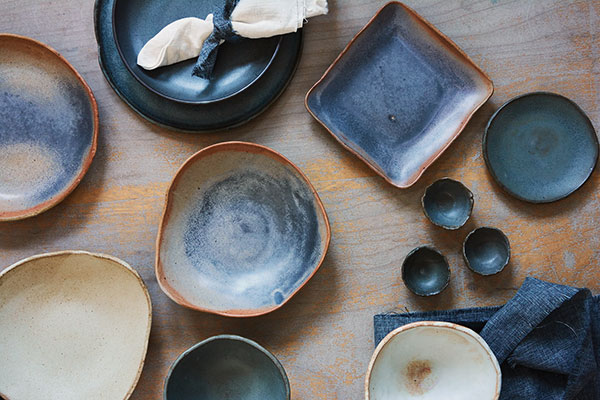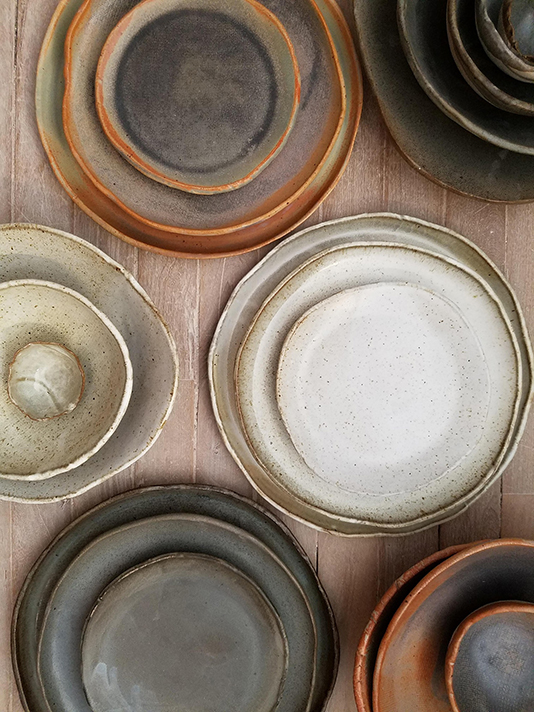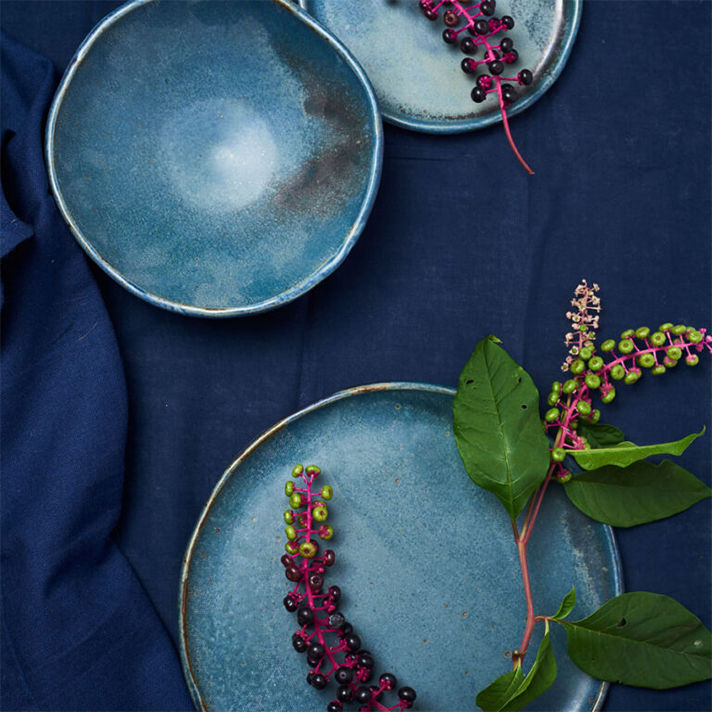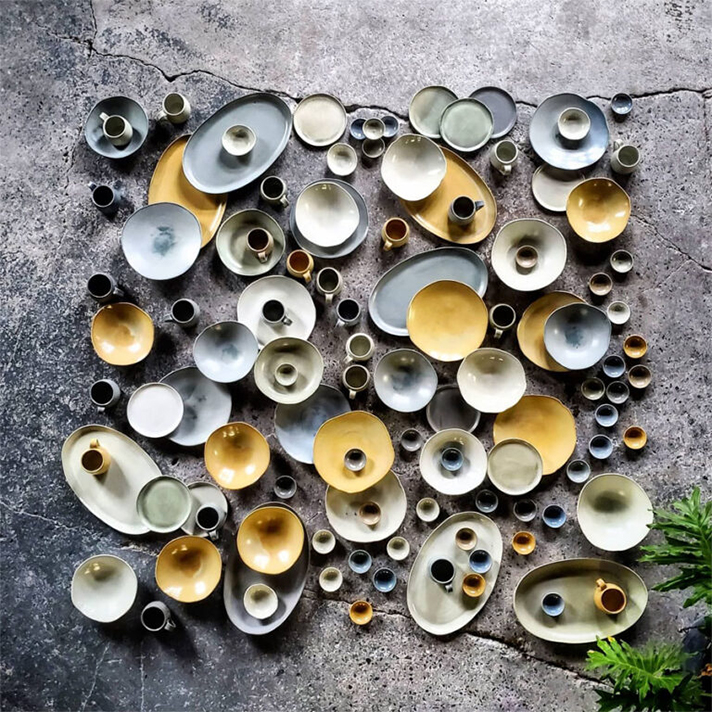
3 Live Edge stoneware bowls and plates in various dimensions, cone-11 stoneware.
Image courtesy of: Ceramic Art Network, photographed by: Margarita Garcia
The fact that Connor McGinn started making ceramics happened purely by chance! He never imagined that this would be his calling; luckily, he was exposed to the medium when he needed extra electives while studying business and marketing. McGinn had been working at North, a farm-to-table restaurant in Armonk, New York. He loved that the chef and his partner tended to all the small details such as working with local famers, winemakers, and brewers. The pair also made sure the decor and lighting, as well as the servers’ uniforms were just right. However at the time, they were still plating their dishes on classic (boring) French white plates.
Elsewhere however, the shift toward interesting dishes was taking place and other similar, high-end restaurants started presenting their dishes as “food art” and part of the presentation was interesting, handmade wares.

Each piece is made in McGinn’s Tarrytown, New York studio.
Image courtesy of: Galerie Magazine
Knowing that McGinn tinkered in ceramics, the restaurant partners approached McGinn about making handmade ceramics for the restaurant. The pair had just gotten two handmade plates from a ceramic artist as samples and they were instantly sold on the idea of “personalized plates” for North.
McGinn quickly decided to creating a unique “look” for North… one that was completely different in style, color, and form, than the samples. Even the construction methods varied; but the owners loved the finished products and appreciated the value of having high-end, handmade plates. McGinn concludes (courtesy of an interview with Ceramic Arts Network with Leigh Taylor Mickelson), “The story that comes along with having handmade plates is more about the relationship between the potter and the chef /owner.”

McGinn describes his wares as an “artful canvas for food.”
Image courtesy of: The Hudson Independent, photographed by: Margarita Garcia
Soon thereafter, McGinn stopped working at the restaurant and focused full-time on ceramics. In order to pay the bills, he started bartending; the owners allowed McGinn to use his own plates to serve the meals and he quickly realized how impressed the customers were with his tablewares. In addition, he got valuable feedback on how his pieces functioned in and out of the kitchen. This interactive process, along with the ceramicist’s personal experience, allowed McGinn to develop a special line of products.
Simply through the process of understanding the inner workings of a restaurant, McGinn understood what color glaze works with what dish and that it is necessary for bowls to be stackable on shelves so that they do not take up a lot of space. All of these experiences target McGinn’s perspective on ceramics… aesthetics and functionality are of equal importance to his craft.

McGinn’s studio, 9 Connor McGinn Studios in Tarrytown, New York.
Image courtesy of: The Hudson Independent, photographed by: Joseph Dalton Dehart
Following the launch of his business six years ago, McGinn opened his own 7,000 square-foot studio. The artist employs three part-time employees who assist him in completing 10-15 orders at any given time. These orders might be in the design phase or in the production stage… and some orders have been as large as 1,5000 pieces. It has taken some time to pare-down and streamline the process; but McGinn says, “It’s a good business model. They order and then they order replacements. While the work is durable and lasts, they are always needing more pieces. The chefs I am working with are always wanting something different for their tasting menus, and they really enjoy having an eclectic mix to choose from when plating new dishes.”
The coolest thing is that this large space has allowed McGinn to invite other “restaurant industry” makers to share the space with him. Two woodworkers and a blacksmith help McGinn with his monthly lease and this lighter load has given him the opportunity to invest in the equipment he needs in order to expand his business. Aptly titled, Makers Central, this has turned into an additional line of business. He says, “Working with other makers, I am realizing that most people who make don’t know what it takes to run a business. People are great artists but not always inclined to be calculated and business oriented. I’m helping them set up their Quickbooks, sell and market their product to restaurants, and we’re having conversations about what we’re struggling with. We are a community of like-minded makers. The end product is not just me. It’s a collaboration. Being okay with that is a constant process, but it doesn’t need to be just me. It is so much better when it involves more people.” We love this incubator!”

A stunning collection in muted tones.
Image courtesy of: The Hudson Independent
McGinn prides himself in the personal relationship he has with each and every chef. For example, Dale Talde, the chef for Goosefeather, requested ramen bowls. The two creatives worked together to design “the perfect” ramen bowl. Often times, chefs want a custom design… such was the case for Blue Hill’s chef, Dan Barber, for a Valentine’s Day menu. The pair collaborated on the size, color glaze, and edge curvature for the 30 bowl order.
This is just one reason McGinn is unique in his craft. As the pandemic, hopefully, nears an end and we are able to frequent restaurants more, McGinn’s star will surely grow. Surely everyone will appreciate dining out all the more… and that experience could only be amplified by McGinn’s beautiful and one-of-a-kind wares!